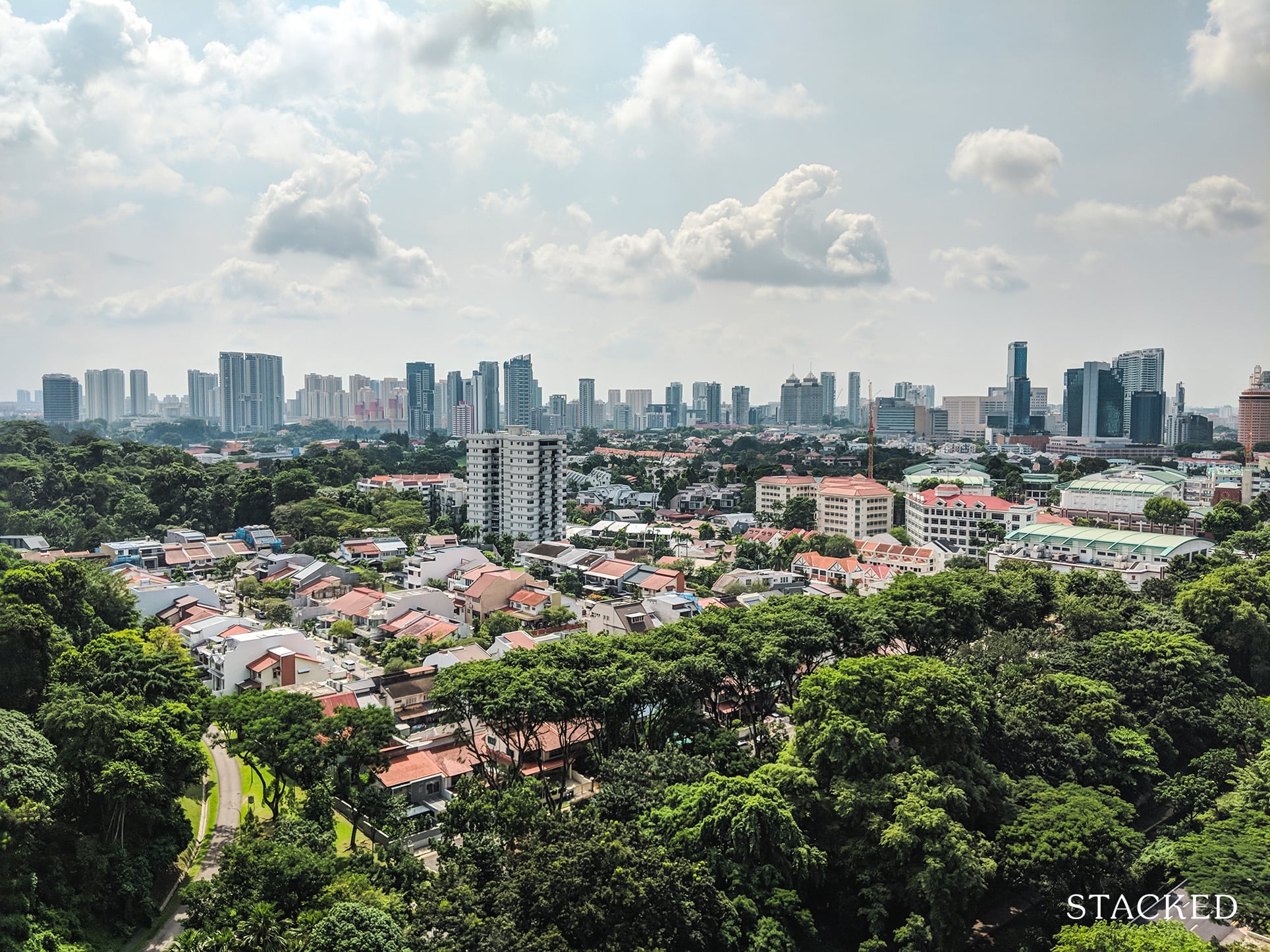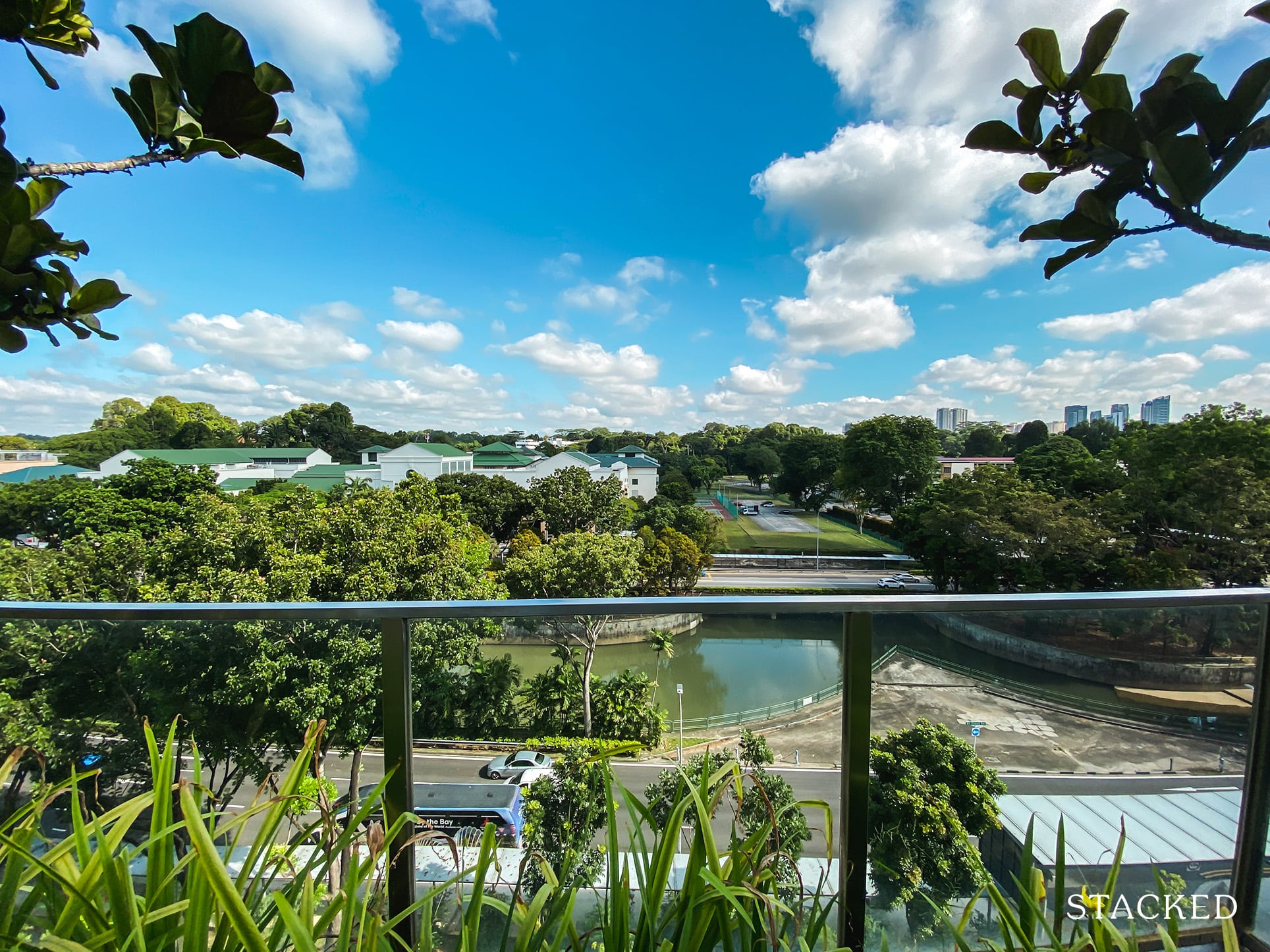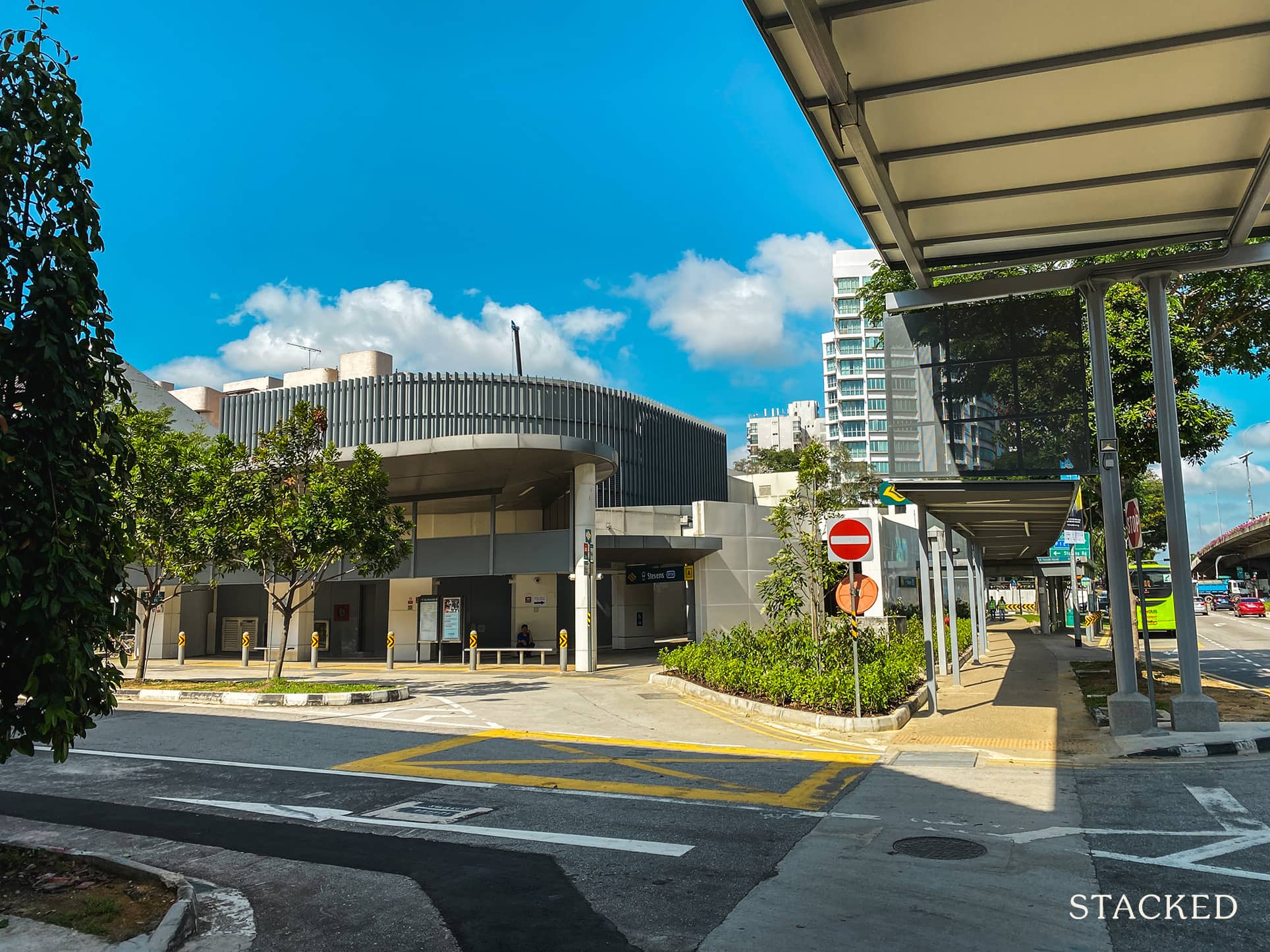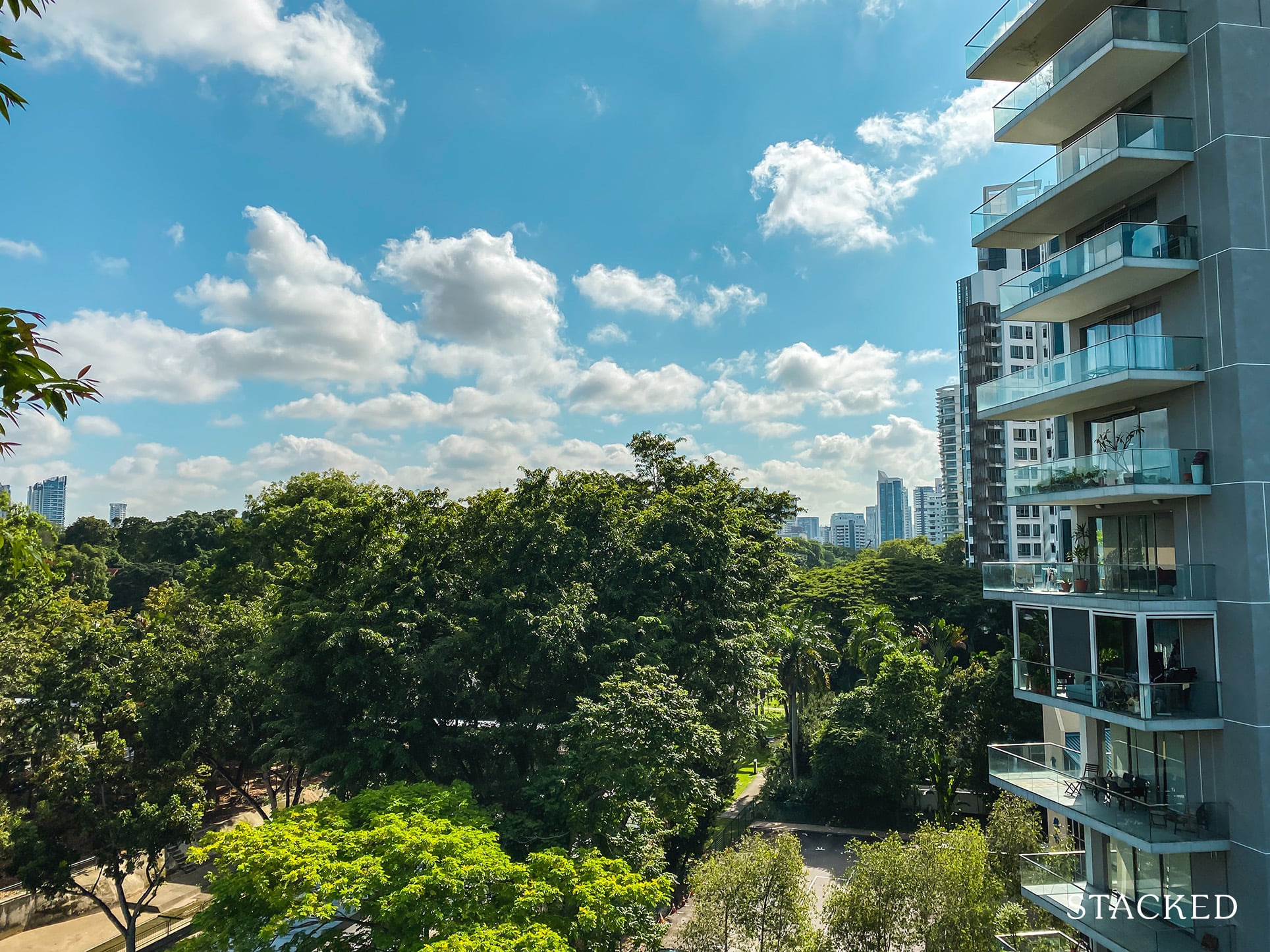Our Painful $1.8 Million Condo Investment Regret: 5 Key Lessons We Learned

Get The Property Insights Serious Buyers Read First: Join 50,000+ readers who rely on our weekly breakdowns of Singapore’s property market.
A seasoned content strategist with over 17 years in the real estate and financial journalism sectors, Ryan has built a reputation for transforming complex industry jargon into accessible knowledge. With a track record of writing and editing for leading financial platforms and publications, Ryan's expertise has been recognised across various media outlets. His role as a former content editor for 99.co and a co-host for CNA 938's Open House programme underscores his commitment to providing valuable insights into the property market.
Almost everyone knows the old property rule of “location, location, location,” but that’s an oversimplification. It’s possible to have a property that’s in a great spot, but of the wrong layout or block to draw the best resale value. This week, we spoke to someone who regrets getting a two-bedder condo unit, in an otherwise supposedly “safe” location. There’s a good amount to be learned from all this:
An ideal location along Stevens Road
S purchased a condo a few years ago, in the seemingly infallible location of Stevens Road. This is in the prestigious District 10 area, close to the famed Dalvey Road landed enclave, near multiple renowned schools, and just around a three-minute drive to the Orchard Road shopping belt. S says:
“We bought it back then as we had an eye to move in, and in view that it’s close to good schools for kids in the future. It also had a good mix of facilities, like a swimming pool and tennis court, and it was near the MRT. So even for rental, it would be an attractive proposition to tenants or easy to rent out.”

And indeed, the property has been rented out for the past few years. However, S says that for some reason, rental rates haven’t been fantastic; and due to the project having a low unit count, the maintenance costs are high. The net rental income, after these costs, has been poor despite the location.
This is where we can see that high rentability differs from high rental yield. This is, in fact, a common problem in a more upscale condo such as the one S owns.
Rentability, which refers to the ease of finding a tenant, is typically high. A lot of people would love to live near Orchard, and near an MRT station in a low-density neighbourhood. However, rental yield (which is the income generated versus the cost of the property*) can be much lower than a more humble, mass-market condo or flat.
Even if the rental income from these other properties is lower, it’s more than made up for by their much lower price point. It’s expected, for instance, for resale flats to fetch much higher yields than private counterparts.
*Gross rental yield = (Annual rental income/Total property cost)
Mistaking future upside
Another mistake that S made was to put too much emphasis on the future upside. Many buyers tend to look at the availability of a new MRT station as a sure guarantee of future profits, but sometimes it would have already been priced in if it was not bought before the announcement.
“Because the MRT was just being built, we figured that once it was completed there would be a future price increase to the area. Also, it was going to be two MRT lines, the Thomson East Coast and Downtown line so it seemed that would be an even bigger draw.”

S also felt that another oversight was that an MRT station in a traditionally more wealthy neighbourhood wasn’t as big of a deal as one might think. It may matter for rentability for tenants, but if most people staying there are families that can afford such homes, they would likely own cars too.
The low unit count is also an issue
For S, the current issues are compounded by high maintenance fees. This is a trade-off for exclusivity: higher-end condos are more private, with smaller unit counts; but that also means fewer units to share the cost.
As of 2023, a mid-sized (500 to 600+ units), mass-market development will have maintenance fees of around $75 to $85 per share value per month; that’s about $375 to $425 per month for larger units. (We have a more detailed explanation of share values here).
But as we’ve shown with these pricier luxury condos, maintenance fees can easily hit four digits a month. The problem with luxury condos is that, besides the small unit count, they also tend to involve features like concierge services, better landscaping, private elevators, and other very expensive common facilities.
While these facilities can attract a wealthier demographic, it’s a balancing act for the landlord: you need to ensure the higher rental income isn’t swallowed by your monthly recurring costs.
A final consideration, which may cause S some difficulty at resale, is the lower volume of transactions. Small luxury developments may see units change hands only rarely; some can go two or three years without a single sale. This makes prices a lot less predictable, as there’s insufficient price history to go on.
More from Stacked
Why Are Singapore Property Prices Returning To Pre-Covid-19 Levels So Fast?
There’s been some recent buzz over a report by Colliers, predicting a return to pre-Covid-19 levels for Singapore property. Before…
Overlooking some key details
S says that, in hindsight, they made some mistakes that cause them to regret the purchase:
“When we first bought it, we really didn’t think about the practical aspects as a home,” S says, “For example, it has an open kitchen and no real yard area. As a two-bedder there was space for one kid, but not a second one. Also, there’s no helper’s room. So it’s good for a couple with one kid, but beyond that, it’s very limited.”
In truth, many developers tend to assume that a one or two-bedder unit is going to be for singles, or couples who don’t have children. We’d say S would have encountered the same problem for these unit sizes, in many other developments.
Another misstep was not considering the surrounding properties. S says:
“There are so many other older condos in the area that might eventually go en-bloc and pose competition when it comes to exiting. We’ve heard of agents that would use our development as a price point to show why resales are worse, and then swing the buyers toward a new launch instead.
We also didn’t realise to think about the demographics of the area. In a place near good schools, people tend to think more long-term; and because it is more premium they also have bigger budgets. In that sense, a two-bedder will be less in demand and have a smaller target audience.”

This is a matter of understanding the tenant demographic. The presence of good schools, for example, appeals most to families; but families are also less likely to squeeze into a two-bedder unit. As such, this locational benefit is negated by the unit type.
Understanding future buyers is also part of the consideration. A larger, high-quantum unit is usually harder to move. However, buyers looking in District 10 are bound to be more affluent and would be less put off by the pricing (what they will flatly reject, however, is a home they consider to be too small).
Finally, S mentioned that the biggest hurdle to get over was the sunk cost fallacy. Over the past few years, it was increasingly obvious that this was not a good investment, but it was just hard to let go.
“It was hard to just bite the bullet to realise the loss and move on. We kept thinking what if there might be further upside in the future, but the years of sitting on it waiting for something to happen could have allowed us to purchase a property with better upside.”
Sometimes called the “Concorde fallacy”, (which was named after the supersonic jet that took people from Europe to the US in record time). Despite results showing that the economic outlook for the jet was not great, the British and French governments continued to throw money at the project in the hopes that it would work out – just because they’d already spent such a huge sum.

In general, small luxury properties are tough for first-time investors
Due to the high quantum and recurring costs, these present a riskier proposition to new investors and landlords. If you examine loss-making transactions, you will see the worst of these tend to come from high-end luxury properties.
This isn’t to say such properties are bad investments; just that they require a degree of experience and acumen which takes time to cultivate. We can’t really blame S for making a mistake if his initial foray was to start at this deeper end.
If you are intending to buy such properties, remember that simply being in a prime location – even spots like Tanglin, Orchard, Bukit Timah, etc., – is not the sole determinant of success. You also need to carefully pick out the right unit, with either the right unit type, layout, or block).
Contact us on Stacked if you need help, and also check out our in-depth reviews that break down each unit type in the project. We cover both new launch and resale condos, to help you make the best possible decision.
get in touch for a more in-depth consultation, you can do so here.
Have a home story to share? Email us at stories@stackedhomes.com.
Ryan J. Ong
A seasoned content strategist with over 17 years in the real estate and financial journalism sectors, Ryan has built a reputation for transforming complex industry jargon into accessible knowledge. With a track record of writing and editing for leading financial platforms and publications, Ryan's expertise has been recognised across various media outlets. His role as a former content editor for 99.co and a co-host for CNA 938's Open House programme underscores his commitment to providing valuable insights into the property market.Read next from Homeowner Stories

Homeowner Stories What I Only Learned After My First Year Of Homeownership In Singapore

Homeowner Stories I Gave My Parents My Condo and Moved Into Their HDB — Here’s Why It Made Sense.

Homeowner Stories “I Thought I Could Wait for a Better New Launch Condo” How One Buyer’s Fear Ended Up Costing Him $358K

Homeowner Stories How We Saved $300K And Got Our 4-Room Toa Payoh Flat in Just 7 Months
Latest Posts

Singapore Property News Why More Land Doesn’t Automatically Fix Housing In Singapore

On The Market Here Are The Cheapest 4-Room HDB Flats in Central Singapore You Can Still Buy From $490K

Editor's Pick Should We Buy An Old 99-Year Leasehold Condo To Live In: Will It’s Value Fall When The Lease Runs Out?

Pro How A Once “Ulu” Condo Launched In 1997 Became A Top Performer

Editor's Pick I Reviewed A New Launch 4-Bedroom Penthouse At Beauty World

Property Market Commentary When Renting In Singapore Is The Smarter Move — And Buying Can Wait

Editor's Pick Why Singaporean Families Are Looking At This Landed Enclave From Around $4M

Singapore Property News Lentor’s First Condo Is Complete — The Early Profits May Surprise You

Editor's Pick A Wave Of New HDB Resale Supply Is Coming In 2026: Here’s Where To Find Them

Property Advice We Own A $800K 1-Bedder And A $1.1M 3-Bedder: Is It Possible To Upgrade To A 4-Bedder Condo?

On The Market These Are Some Of The Cheapest 5-Room HDB Flats Left In Central Singapore

Pro This 698-Unit Ang Mo Kio Condo Launched At The Wrong Time — And Still Outperformed Peers

Singapore Property News $281.2M in Singapore Shophouse Deals in 2H2025 — But That Number Doesn’t Tell the Full Story

Property Market Commentary 5 Key Features Buyers Should Expect in 2026 New Launch Condos

Editor's Pick What “Lucky” Singaporean Homebuyers Used To Get Away With — That You Can’t Today


